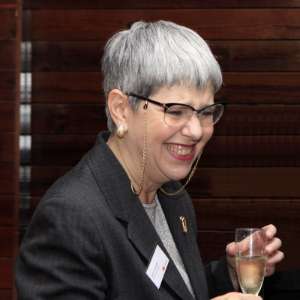Gaetano Donizetti composed Lucrezia Borgia for La Scala in 1833. The libretto is based on a drama by Victor Hugo, the source where Lucrezia's notorious reputation as an incestuous murderess originated.

The plot follows a mature Lucrezia, now married to Don Alfonso, the Duke of Ferrara, as she secretly watches a young man named Gennaro. Unbeknownst to him, she is his mother, having abandoned him at birth. Gennaro's friends reveal her true identity as the hated Lucrezia Borgia, responsible for the misfortunes of many of them. Horrified, Gennaro joins his friends in defacing the Borgia palace. Duke Alfonso, mistakenly believing Gennaro to be his wife's lover, sentences him to death. Lucrezia intervenes to save him, begging her son to flee Ferrara, a promise he makes. However, Gennaro's friends convince him to attend a party that evening; at the gathering, Lucrezia exacts her revenge by poisoning the wine of the men who defaced her palace... inadvertently poisoning Gennaro as well. As she reveals she is his mother, Gennaro dies in her arms.
Director Andrea Bernard relocates the action to 1950s Rome, drawing a parallel between the corrupt power of the 15th-century Borgia papacy and that of Pope Pius XII, whose influence aided the rise of Italy's long-ruling and corrupt Christian Democratic Party. While the concept has merit, the parallel feels somewhat forced; regardless of one's view of Pius XII as a corrupt pope enmeshed in political intrigue, he was hardly comparable to the Borgias.
Bernard’s central idea is ultimately unconvincing in its execution. The ecclesiastical element is overwhelming and invasive: Alfonso, portrayed as a pre-eminent Christian Democrat, wears a cilice, and every character on his side is a man of the cloth. The chorus remains in clerical vestments (designed by Elena Beccaro) throughout, whether they were playing soldiers, guards or assassins. This leads to absurdly impractical scenes, such as a group of cardinals – conspicuously dressed in bright red – attempting to stealthily surprise and murder Gennaro.
For the sets, Alberto Beltrame introduces a rotating platform (a first for the Teatro del Maggio); many didn’t feel the need for yet another revolving stage, especially one that proves to be distractingly loud. During Lucrezia’s “Com’è bello”, the platform is used to stage a series of flashbacks depicting her traumatic history: her marriage to Alfonso, the imposing figure of her father the Pope, the convent nuns, and a striking, pearly white room dominated by an empty cradle.
Conductor Giampaolo Bisanti opted for a particularly extensive version of the score, his edition including the 1840 Parisian cabaletta for “Com'è bello”, Gennaro's Act 2 aria “Madre, se ognor lontano” (composed for London in 1839), the alternative duet for Alfonso and Lucrezia in Act 1, and the da capo structure for her final aria, “Era desso”. The result was a rich and fascinating listening experience. Bisanti’s interpretation was somewhat subdued, often placing the orchestra in a supportive role, yet the sound remained elegant and in great style. Some of the slower-than-usual tempi allowed the audience to appreciate intricate details in the music that might otherwise have passed unnoticed.
Lucrezia Borgia is an opera that rests entirely on the shoulders of its protagonist, and Jessica Pratt, making her role debut, proved to be perfectly suited for the task. She displayed all the vocal qualities we have come to admire: a brilliantly sparkling high register, high notes of steel and silver delivered with impossible ease, rapid coloratura and ethereal pianissimi that effortlessly filled the theatre. Yet beyond this technical mastery, she delivered a dramatic interpretation that surprised and transfixed even her most knowledgeable admirers. By leveraging her impeccable technique, she employed her middle register with solid projection, creating an intensely emotional and compelling portrayal.
René Barbera delivered the role of Gennaro with a high, lyrical tenor and elegant bel canto style, capturing both the character's rash youthfulness and his tenderness as a son. His death scene was emotional and moving. As Alfonso, Mirco Palazzi had a somewhat rocky start, but his smooth bass soon found its secure footing, leading to a convincing portrayal of the scheming, malevolent politician. His Act 1 duet with Pratt was particularly exhilarating.
The role of Maffio Orsini – Gennaro's best friend and, in a deftly handled directorial twist, his love interest – was performed en travesti by mezzo Laura Verrecchia. Her voice was bronzed, smooth and powerful, her style impeccable, offering an extremely convincing performance. All the supporting roles were cast with more than competent singers who performed with elegance and commitment. A particular mention must go to Antonio Mandrillo in the role of Rustighello, the head of Don Alfonso's guards. Dressed as a priest, he delivered his lines with a ringing, well-projected and beautiful high tenor.


